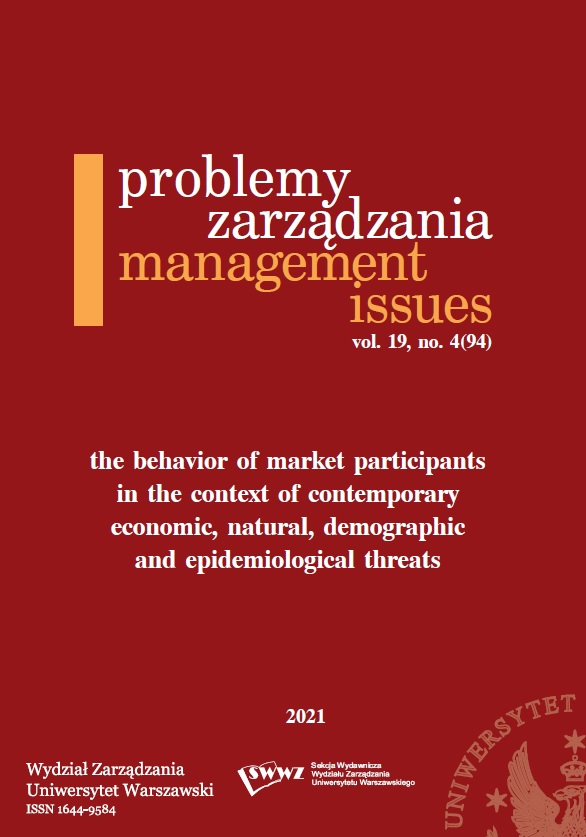Buying Behaviors of Polish Consumers During the Pandemic Lockdown – Research Results
Buying Behaviors of Polish Consumers During the Pandemic Lockdown – Research Results
Author(s): Ewa Prymon-Ryś, Agnieszka GalarowiczSubject(s): Economy
Published by: Wydawnictwo Naukowe Wydziału Zarządzania Uniwersytetu Warszawskiego
Keywords: consumer behavior; pandemic; lockdown; e-commerce; marketing research
Summary/Abstract: Purpose: The purpose of the article is identification and evaluation of the most important changes that have occurred in the behavior of Polish consumers as a result of the pandemic lockdown introduced in 2020. The article presents the results of studies conducted during the epidemic restrictions from March 15 to May 4, 2020.Design/methodology/approach: The main aim of the research was to determine how these restrictions influenced the purchasing behavior and decisions made by consumers. In the polls, the technique of an internet survey was used, which was justified by the accepted form of remote communication imposed on the society in various spheres of activity. The subject of the research was the organization of free time, the organization of shopping in households, the frequency of purchases and the methods of shopping in stationary and online stores.Findings: The most important phenomena that have been observed include the growing importance of e-commerce and technologies supporting distance communication and online exchange. The share of FMCG in online purchases increased when compared with the pre-pandemic online purchases. Polish consumers reduced the frequency of purchases and limited their overall spending on everyday purchases. During the first wave of the pandemic, the crucial issue for consumers was time management as a result of increased professional and family responsibilities, or (a similar percentage of responses) of excess free time. Poles used information technologies – for communication, shopping, learning andentertainment, to cope with the imposed social isolation. This trend, as indicated by the results ofsubsequent studies, will continue.Research limitations/implications: The research was conducted at a particular moment of time, duringthe last 2 weeks of the first pandemic lockdown; therefore, the study cannot provide the measurementof observable effects of behavior changes during a longer time since the pandemic situation hasbeen volatile. In the research, the snowball method of sampling, which has its own limitations,was adopted.Originality/value: The value of the article results from the outcomes of the survey conducted withthe use of a research questionnaire originally designed for the purposes of this study and empiricalresearch results obtained during the lockdown period, which allowed for observing changes in consumerbehavior in real time.
Journal: Problemy Zarządzania
- Issue Year: 19/2021
- Issue No: 4 (94)
- Page Range: 19-37
- Page Count: 19
- Language: English

